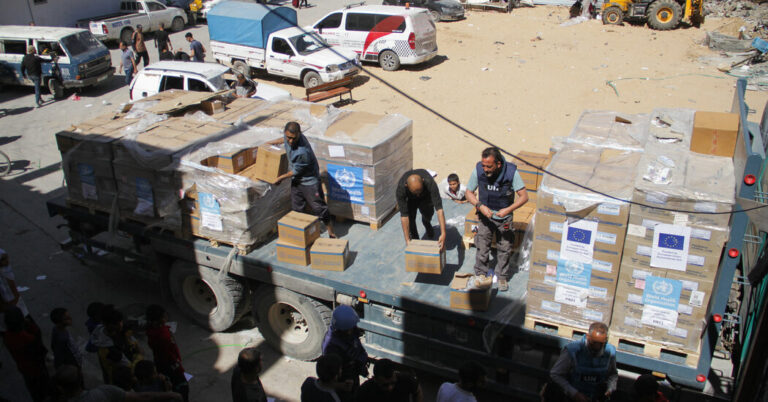In contrast, UN data shows that a total of 533 aid trucks entered Gaza in the three days after Saturday. More broadly, UN figures show no increase in the daily average of trucks heading into Gaza in the first week of April, compared to the previous week.
The reasons for the difference are unclear, but one is the different methods Israel and the United Nations use to track the trucks, said Jens Laerke, a spokesman for the UN humanitarian office.
Trucks screened – and counted – by Israel at two working border crossings often enter Gaza only half full, after Israeli inspectors ban some of their contents, Mr. Laerke. Once inside Gaza, they are unloaded, repacked as truckloads and sent to warehouses run by the United Nations, which counts the number of truckloads that arrive, likely leading to a lower tally.
Other complications also mean that trucks often do not pass through a crossing and arrive at a warehouse on the same day, meaning that the daily numbers at crossings and warehouses often do not match, he said.
In a statement on Wednesday, COGAT criticized the UN’s “false method of counting”, which it called “an attempt to hide their difficulties in distribution logistics”.
Earlier Israeli pledges to increase aid did not significantly increase deliveries. Under US pressure in mid-December, Israel reopened a Gaza crossing, Kerem Shalom, for aid trucks, promising to allow 200 trucks a day to enter. But aid agencies say strict Israeli inspections keep the numbers below what is needed.
And Mr. Laerke and other aid officials said enormous challenges remain in distributing aid inside Gaza, particularly in the north, where Israel has denied access for UNRWA, the main UN agency. relief working in the territory.
Aaron Boxerman contributed reporting.
